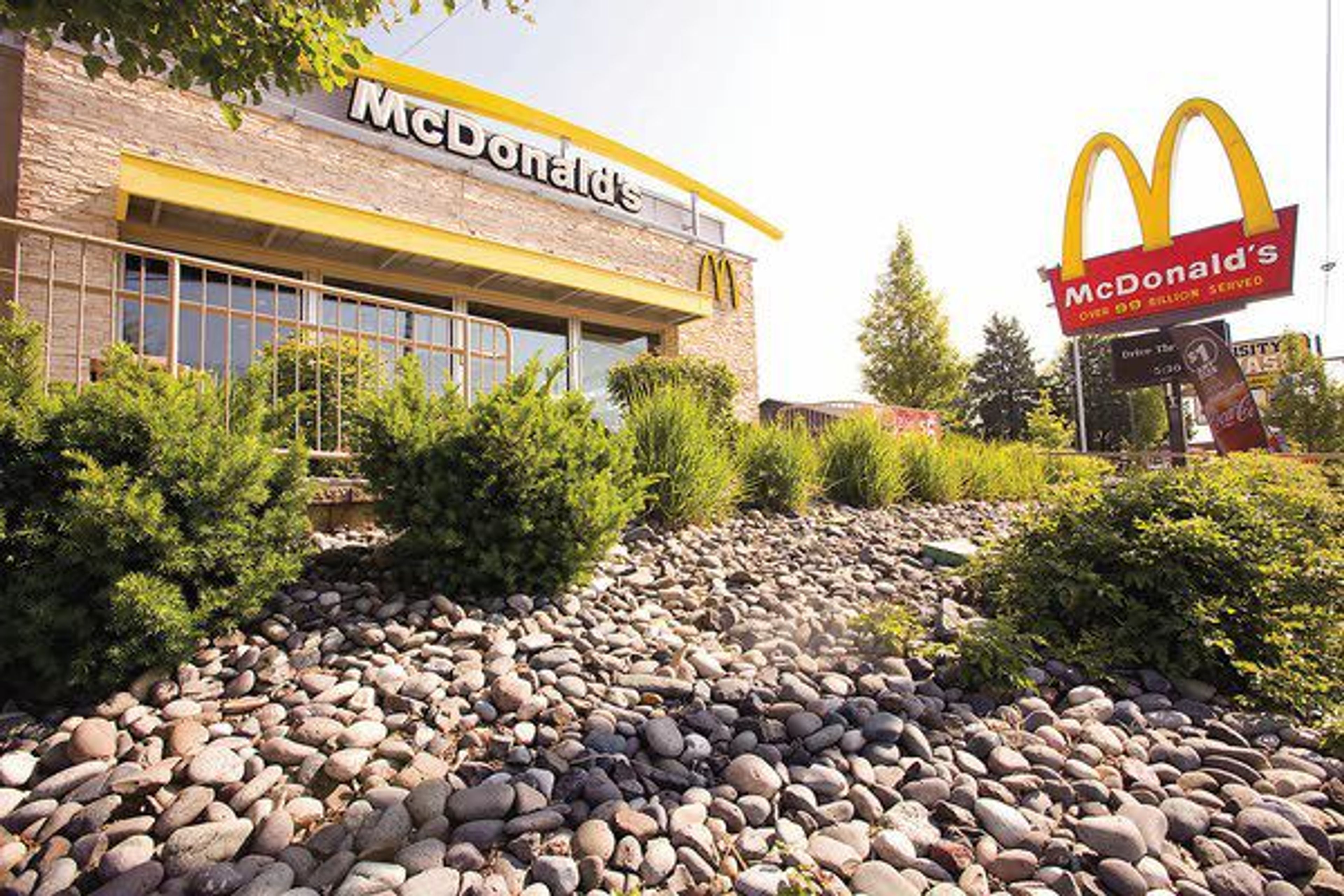You may have noticed fast food restaurants are no longer what they used to be. They no longer shout at you in bright colors and cheap plastic interiors. They now boast a more urbane look, distinguished, as it were, by a careful confluence of wood and stone, but also a sophisticated articulation between, say, a window sill and an interior wall.
What is going on? When did fast food restaurants care about the finer things in life? When did they care to slow down and have us appreciate our surroundings? To be sure, they still sell fast things, fast burgers and fast fries, but they also clearly want us to enjoy our time and use the space to meet and collaborate.
In an interview with BuzzFeed, Max Carmona, McDonald's senior director of US restaurant design, admits the company has "moved away from a cafeteria feel to a more comfortable, and in some ways, intimate restaurant." He goes on to mention the way proper lighting can improve the look and even taste of food and, of course, the people with whom we share a meal.
But the interview and many like it don't quite reveal the source of the change. Why spend millions of dollars on restaurants whose food, 70 percent in the case of McDonald's, is eaten on the go, through a window and in the car. For that, we'll have to connect new dots.
In his book "The Rise of the Creative Class," Richard Florida may have had his finger on the right pulse. In it, he talks about a new class of people whose new talents in design and electronics have enabled them to reshape reality as we know it, including the way we interact and relate to each other.
They are the web designers of our time, the film and video makers, programmers, the writers and those whose keen skills in Photoshop have loosened our fidelity to notions of actuality. "These people," says Florida, "engage in complex problem solving that includes a great deal of independent judgement and requires high levels of education or human capital." They have reversed the hierarchies of employer and employee, boss and worker, not because they are necessarily smarter but because they are far more adept in connecting unrelated pieces, largely digital, than their elder counterparts ever were.
Because they are in high demand, they are discerning in their approach to picking where they live. They adhere to places that offer access to a "variety of economic opportunities, a stimulating environment and (exciting) amenities." They care about jobs but more so the places in which these jobs exist and through which they can cultivate friends and generally an integrated way of life.
Moreover, they value diversity, not least because the world in which they live and work is rich with people from various parts of the world. On a daily basis, they are just as likely to collaborate with colleagues from China, India and Zimbabwe as they are from the states, sharing tasks but also meals and a night out in the town. To them cultural diversity is not merely about tolerance but more fundamentally about finding in differences a great source of creative ideas.
Fast food restaurants have taken note of their rise. According to Florida, "Over the twentieth century the creative class grew from roughly 3 million workers to its current size, a tenfold increase; since 1980 alone it has more than doubled." The change we see in them, in food and décor, is not by accident but the result of a market study that suggests that not only is the creative class increasing but that their interests and biases are pulling others into their vortex.
But if fast food outfits are adapting to critical change, are our communities doing the same? To some extent yes, and we can point at few developments, not least the urban housing emerging in both Pullman and Moscow, the handsome new wine tasting store in Moscow, new dorms on both campuses.
But there are also some very stark voids in the system. The shoddy and wasteful suburbs that hark to the worst of the '70s and '80s, the Schweitzer compound that still looks like a prison ground, the shopping centers, the Third Street bridge, the entrance to Moscow - all bizarrely out of touch and out of sync with critical shifts in the world. How will we attract the next creative class of professors and researchers, students and entrepreneurs? Our answer might just be in front of us the next time we order our "Berry Burst Chicken Salad."
Ayad Rahmani has been with Washington State University since 1997 and is an associate professor in the School of Design and Construction.









